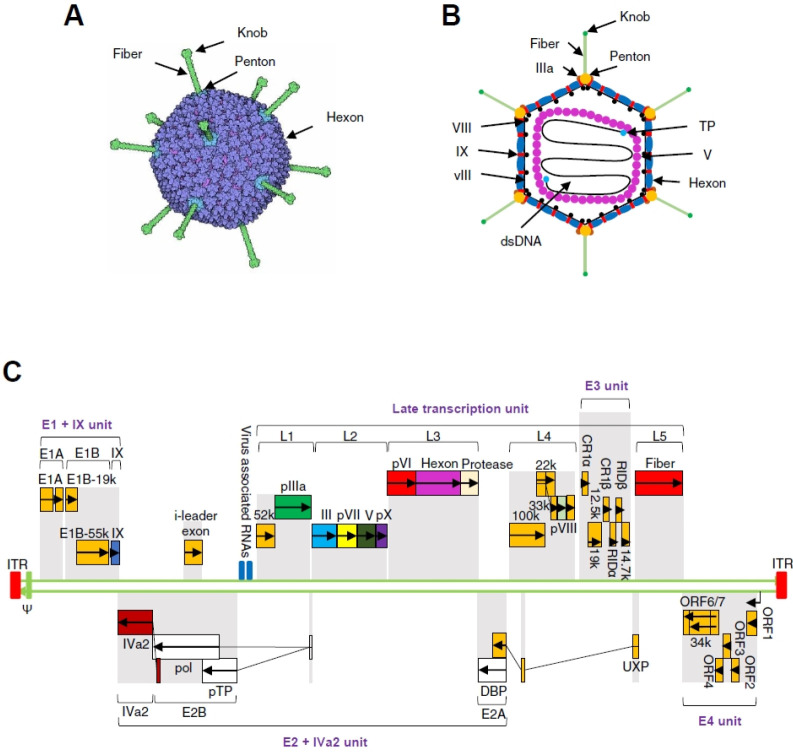Fig. 1.
The capsid and genomic structure of adenovirus. (A) The capsid of adenovirus. The icosahedral capsid of adenovirus is composed of 3 major types of proteins: 12 knobbed fibers, 12 pentons, and 240 hexons. (B) Cross-section through the capsid of adenovirus. The adenovirus is 90-100 nm in diameter. Several types of minor proteins, such as IIIa, VIII, IX, vIII, bind in the grooves be-tween the major proteins, hexons, and pentons. The viral genome DNA binds covalently to the terminal protein (TP) at 5’ ends and is wrapped in nucleocapsid consisting of histone-like proteins, such as protein V. (C) The genomic structure of HAd5. The HAd5 genome is a linear, non-segmented, double-stranded DNA molecule with a length of 36 kb. The 38 viral protein-coding genes are organized in 17 transcriptional units, categorized into early units (E1-E4), intermediate units, and late units (L1-L5) in both directions. The early transcriptional units encode proteins that are involved in the initiation of viral DNA replication (E1), the regulation of viral transcription (E2 and E4), and the suppression of host responses to adeno-viral infection (E3). The intermediate transcriptional units encode two proteins, IX and IVa2. The late transcriptional units (L1-L5) encode the components of viral capsid.

